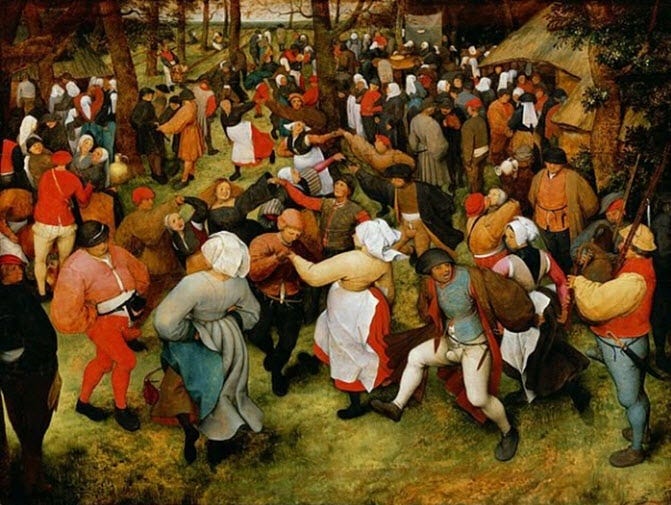
Discover more from Vetus Mysteria
The two art forms I practice are music (drums and piano), and drawing (sketching and watercolor).
These two forms feel different, but I need them both in my life. They also represent two opposing concepts, a fascinating thought attributed to Nietzsche’s study of art in The Birth of Tragedy.
These are: the Apollonian and the Dionysian.
Dionysus, a vegetation god (equivalent to Osiris, Bacchus) of fertility, wine, ecstasy, and inspiration from within, and individualism, is an opposing force to Apollo, a sun god (equivalent to Horus) of reason, order, structure, and inspiration from above, and community.
Art: two opposite takes
In art, you can think of these opposing forces as an Apollonian calm, thoughtful, and reasoned (sculpting a human form or drawing a bird) and a Dionysian rhapsodic inspiration and energy (improvising a guitar solo or singing). Both encapsulate artistic expression, both can be thought of as “flow state,” but they can also be seen as opposing forms.
The same art form might contain both, too. Apollonian painting might be realism, still life, something very well-constructed and logical, while Dionysian painting might be abstract expressionism. Or epic poetry vs lyric poetry.
Dreamland and drunkenness
The Apollo/Dionysus dichotomy, for Nietzsche becomes also “dreamland” vs. “drunkenness,” and draws on Schopenhauer’s work to explain it.
What he means is that Apollo represents the world of ideals, fantasy, and perfected beauty as an escape from the reality of life, “the deep consciousness of nature, healing and helping in sleep and dream and as in dreams,” we experience this sensation with an unreal sense of calm.
“The beauteous appearance of the dream-worlds, in the production of which every man is a perfect artist...” - The Birth of Tragedy
Contrast that with the “drunkenness” of the Dionysian. In this state, “Man is no longer an artist, he has become a work of art,” and is overcome with an ecstatic sense that we are all united in community and rooted in nature, equal to other people, at one with the animals.
“[In this state] not only is the covenant between man and man again established, but also estranged, hostile or subjugated nature again celebrates her reconciliation with her lost son, man.” - The Birth of Tragedy
Alchemizing the opposites
The duality of Apollonian and Dionysian is reminiscent of yin and yang, or any number of Hermetic, or alchemical opposing forces, such as night and day, male and female, etc.
As is often the case, opposing forces often represent an opportunity for harmony or union, resulting in some kind of desired outcome. The union of male and female creating new life, for example. Or simultaneous right brain/left brain processing.
“...the common goal of both these impulses, whose mysterious union, after many and long precursory struggles, found its glorious consummation...”
Nietzsche thought the 5th-century BCE Athenian Greek tragedies were the bridging of the Apollonian and Dionysian “...till at last, by a metaphysical miracle of the Hellenic will, they appear paired with each other, and through this pairing eventually generate the equally Dionysian and Apollonian art-work of Attic tragedy.”
To Nietzsche, the height of art was found in the pairing of these two forms.
Though not intentional, I’ve found that my own life feels richer when I make room for both Apollonian and Dionysian art forms. Both the rapture of uninhibited playing of music and the calm, dreamlike flow state entered when drawing or painting foster a feeling of deeper connection to the universe.
They are two paths to the same destination.
- Joe
Links to more
The Birth of Tragedy - full text
Apollonian vs Dionysian in music
VIDEO: Joseph Campbell on Apollo vs. Dionysus
Books
The Birth of Tragedy, Friedrich Nietzsche
Nietzsche on Art and Life, Daniel Came



















